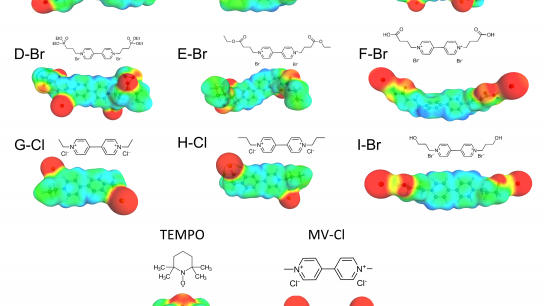Publication: Computer-aided design of membrane-free batteries using conductor-like screening model for real solvents
Our colleagues from Universidade de Aveiro, Burgos University and IMDEA Energy have published a new journal article in the Energy Storage Journal relating to a computer-aided design of membrane-free batteries using conductor-like screening model for real solvents.
The abstract reads as follows:
The use of renewable energy sources for electricity generation is increasing, and effective energy storage solutions are needed to manage the mismatch between energy production and demand. Redox Flow Batteries (RFBs), particularly Membrane-Free Flow Batteries based on Aqueous Biphasic Systems (ABSs), are a promising technology for stationary energy storage. However, to prevent the crossover of species, the redox-active compounds used in the catholyte and anolyte must be selectively dissolved, which is currently achieved using expensive physical barriers. In this study, an approach was developed to predict the partition coefficient of redox-active compounds in ABSs formed by ionic liquids or polymers, salt, and water using the Conductor-like Screening Model for Real Solvents (COSMO-RS). Experimental data from literature was used to validate the model, resulting in a good correspondence between predicted and experimental data. Furthermore, the method was used to design viologen derivatives and predict their partition coefficients, nine of which were synthesized and validated experimentally. It was found that derivatives containing amine groups have the highest partition coefficients to the salt-rich phase. COSMO-RS proved to be a powerful tool to accelerate the development of advanced biphasic membrane-free flow batteries by designing and finding combinations of redox species with suitable partition coefficients.
The full article is available here.

